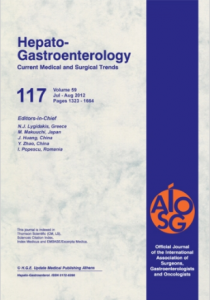Svoboda P, Kantorova I, Kozumplik L, Scheer P, Radvan M, Radvanova J, Krass V, Horalek F
Hepatogastroenterology. 2011 Jul-Aug; 58(109):1208- 13.
BACKGROUND/AIMS:
Natural Orifice Transluminal Surgery (NOTES) has been introduced in endoscopic surgery as a new system offering the advantage of a less invasive procedure. Gastroesophageal reflux disease (GERD) appears to be the most promising application of NOTES treatment. The aims of our study were to evaluate the safety and efficacy of this procedure and length of hospital stay.
METHODOLOGY:
Patients indicated for surgery of GERD were randomly assigned (ratio 2:1) to transoral incisionless fundoplication (TIF group, n=34) and control group, where gold standard Nissen laparoscopic fundoplication was performed (NLF group, n=18). For TIF the Plicator® method was initially used for 18 patients, but the company terminated production in 2008 without a follower. During the last 2 years the EsophyX® method was used for 16 patients.
RESULTS:
After the evaluation of 34 TIF patients and 18 NLF patients we observed similar efficacy of TIF procedures compared with NLF after 3 and 12 months. The hospital stay was significantly shorter (p<0.0001) in TIF group (average, 2.9±0.8 days) than in NLF group (6.4±0.7). The TIF procedure was safe; we observed 1 serious adverse event in the TIF group and 3 in the NLF group.
CONCLUSIONS:
It can be summarized that both NOTES TIF procedures are, after the initial learning curve, safe and effective methods for treatment of GERD, allowing substantial shortening of hospital stay. The effect of both procedures was sustained over 12 months. Longer follow-up is necessary to verify efficacy for more years.
Link to abstract on PubMed: Svoboda P, et al; Hepatogastroenterology, 2011 Jul-Aug; 58(109):1208- 13.


